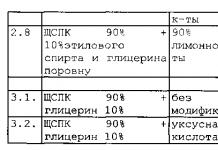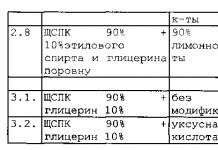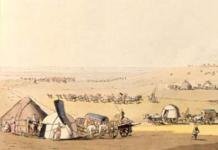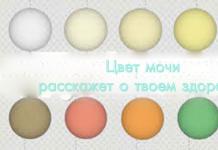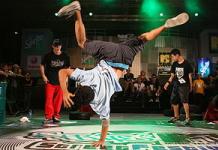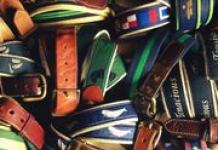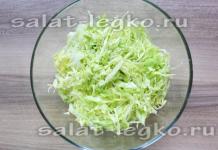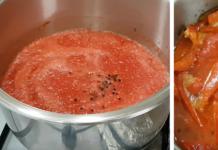Anyone can decoupage a kitchen board and wall clock. This interesting and simple way of decorating will bring more comfort and beauty to the kitchen interior.
The concept of “decoupage” includes decorating any surface with paper elements. This technique, invented 4 centuries ago by Chinese workers, gradually penetrated into European countries and reached the borders of Russia. This is a kind of hand painting of any surface: wood, plastic, glass, ceramic, leather, fabric. Decoupage of a kitchen board is considered an original way of decoration. Decorating this element will not only decorate the room, but also improve the mood of the hostess.
Decorating a cutting board
Any thing decorated according to your own design is always interesting and unique. And if this item performs an important function, its significance increases several times. One side of the cutting board is used for cutting food, and the other is decorated at your discretion with the image you like.
What is needed for work:
- acrylic paints white and golden;
- PVA glue;
- gouache in yellow and green shades;
- surface coating varnish, 2 napkins;
- brush, foam rubber, sandpaper.

Preliminary work boils down to the following:
- Preparing the board consists of sanding its surface with fine sandpaper. After cleaning, apply white acrylic paint to the place where the napkin will be located. As soon as the board dries, you need to clean the surface again to completely get rid of roughness.
- Prepare 2 napkins, layer them, taking the top layer with the pattern. Tear out the ornament you like with your hands and place it on the surface of the board, after moistening it with water. Place a piece of napkin and carefully smooth the edges.
- Dilute PVA glue by half with water and apply to a napkin. Dilute white paint with yellow gouache and decorate the background with it. (It turns out a creamy shade).
- Dilute white with green and draw a frame.
- Dip a piece of foam rubber into golden paint and paint the unpainted part of the board along the previously drawn frame.
- Treat the surface with clear wood varnish.
To master the decoupage technique, you can practice on special wooden blanks, shoe boxes, and glassware. To prevent the paper drawing from merging with the base, try to choose monochromatic, desaturated tones for this part.
What should napkins be like?
The decoupage technique involves using the top layer of a napkin. The pattern on it is pulled out by hand in order to achieve blurry edges and a better fit to the surface.
In cases where the clarity of the lines is important, the pattern is cut out with scissors. Then the napkin is additionally painted, the necessary drawings are made, and the overall background is finalized.
What types of napkins are used for decoupage?
- Special three layers. Sold in single copies, they have standard dimensions of 33*33 cm and a very beautiful design. They cost about 20 rubles per unit. For beginners, it is recommended to purchase cheaper samples and practice on them.
- Regular three-layer napkins. They have standard sizes, cute patterns and low cost. The most interesting and original ones will be New Year's themed napkins.
- Four-layer paper scarves are smaller in size and have a low price, and there are many nice designs among them.

What equipment is needed for decoupage?
The decoupage technique allows the use of different types of paper. These can be scraps of newspapers, magazines, napkins, thin textiles, and wrapping material.
Please note that:
- You cannot use designs printed on a printer for decoration; such paint will quickly smear.
- Excessively thick materials should also be avoided; they will not provide a smooth surface.
- Scissors are used both special ones intended for decoupage and regular, small ones.
- The width of the brush should not be more than 2 cm, it will be more convenient to use.
- For work, PVA glue diluted with water is often used.
- The varnish can be any: glossy, matte, acrylic based.
Methods for gluing napkins
Before starting work, the surface to be decorated is treated with white paint. On this basis, the napkin pattern will be visible most clearly, while on a dark basis it will be slightly distorted.

Any perforated coating can be easily smoothed out after getting wet, so there is no need to worry about this. You can glue napkins in different ways, any of which will be correct, because each decorating case is individual.
Using an iron
This method is used only on flat surfaces, and parchment paper, glue, and a napkin should be at hand. Glue is applied to the base base, dried, a napkin is placed on it, covered with parchment paper and gently ironed with a hot iron. The glue sets the paper, after which the surface is coated again.
Application using a file
This method is simple and convenient and is applied equally to any coating. The napkin is turned over onto the file with the pattern down. Water and glue are dripped into the middle in a ratio of 10:1. Carefully moisten the napkin, remove all wrinkles and folds, expel the air from under it, get rid of excess liquid, glue the file with the napkin onto the prepared base. The wet cloth can be easily rotated at the desired angle, and any unevenness or bumps are smoothed out with plain water.

Using a fan brush
This simple method requires maximum accuracy and perseverance. The napkin is placed on the surface and water is poured into its middle. Using a fan brush, the water is dispersed to the sides along the base of the entire napkin. Folds can be easily straightened out by carefully lifting the edges of the paper. This technique is ideal for decorating uneven concave and convex surfaces.
Decorating a kitchen clock
A clock is a necessary attribute of any home, especially in the kitchen. To feed your family delicious meals, it is important to monitor their preparation time. This familiar attribute should fit organically into the kitchen, becoming its mandatory part.
An unusual solution would be to use an ordinary frying pan: such an attribute will not only attract attention, but also awaken the appetite.
To create your own watch decor you will need the following:
- masking tape;
- white acrylic paint;
- drill, nails;
- napkins;
- cord;
- clock hands;
- rhinestones for decoration;
- acrylic based varnish.
The handle of the frying pan and its edges are wrapped with masking tape, the remaining part is painted over with white paint. Use a drill and a nail to make a hole in the middle. Selecting a suitable pattern on a napkin will help to highlight the kitchen interior, which will bring originality and freshness to the kitchen interior.


 We select the side on which the decor will be located and apply one layer of white primer to this side of the board. Dry and sand with sandpaper. As decoration, we will need a motif of a suitable napkin, which we carefully cut out with scissors along the contour. Then we layer the napkin (take only 1 layer out of 3) and apply it to the board. There must be an equal distance from the side edges of the napkin to the edges of the board. There should be a slightly larger distance at the bottom than at the side. And the distance from above should be even greater than from below.
We select the side on which the decor will be located and apply one layer of white primer to this side of the board. Dry and sand with sandpaper. As decoration, we will need a motif of a suitable napkin, which we carefully cut out with scissors along the contour. Then we layer the napkin (take only 1 layer out of 3) and apply it to the board. There must be an equal distance from the side edges of the napkin to the edges of the board. There should be a slightly larger distance at the bottom than at the side. And the distance from above should be even greater than from below.
 My motive is mushrooms. I had to cut it out with small nail scissors, but it was worth it.
My motive is mushrooms. I had to cut it out with small nail scissors, but it was worth it.

 Having cut out the motif along the contour, I glue it with PVA glue, pressing it with a flat brush from the center of the motif to the edges, removing excess glue and air. I sushi. For protection I apply one layer of acrylic varnish. Using sandpaper I remove excess folds (if there are any).
Having cut out the motif along the contour, I glue it with PVA glue, pressing it with a flat brush from the center of the motif to the edges, removing excess glue and air. I sushi. For protection I apply one layer of acrylic varnish. Using sandpaper I remove excess folds (if there are any).
 We paint the board with small strokes using a small brush in different directions. In this way we go around all the small details, then with a larger brush we cover the entire board with orange.
We paint the board with small strokes using a small brush in different directions. In this way we go around all the small details, then with a larger brush we cover the entire board with orange.

 We apply color in two layers with intermediate drying.
We apply color in two layers with intermediate drying.

 Now we create a three-dimensional background with acrylic paints, which is called an “acrylic fur coat.” To do this, take old paint and, with a palette knife or thick brush, spread it in a dense layer on the board, making the surface embossed. If you don’t have old paint, you can thicken the paint: with putty, flour, semolina, or leave the paint in the air a little. I thickened the paint with flour. At some point, when the relief paint has dried, you need to check that sharp tips of the paint do not form, press them with your finger and remove them until the paint is completely dry.
Now we create a three-dimensional background with acrylic paints, which is called an “acrylic fur coat.” To do this, take old paint and, with a palette knife or thick brush, spread it in a dense layer on the board, making the surface embossed. If you don’t have old paint, you can thicken the paint: with putty, flour, semolina, or leave the paint in the air a little. I thickened the paint with flour. At some point, when the relief paint has dried, you need to check that sharp tips of the paint do not form, press them with your finger and remove them until the paint is completely dry.
Don't know where to start learning a new hobby? Master class on decoupage technique with printout: cutting board for beginning craftswomen.
Crafts in the decoupage style with printouts are fascinating and inspiring. At first glance, it seems that it is very difficult to make such beauty with your own hands, but in fact this technique is quite simple and does not require special talents or artistic abilities. We offer you a master class with photos, which describes, step by step and in an accessible way, decoupage of a cutting board for beginners using printed images. With the finished work you can decorate your own kitchen or give a craft to your mother, friend, or mother-in-law. We are sure that you will definitely succeed!
Materials and tools for decoupage
- board;
- an image printed on a laser printer (for this decoupage master class with a printout, a watercolor by the artist Aleksandra Nea was taken, you can use any picture);
- document file;
- rubber roller;
- white acrylic paint;
- artistic acrylic paints;
- acrylic lacquer;
- synthetic art brush (flat), soft bristle brush (pony), fine brush;
- sponge or piece of foam sponge;
- stencil;
- scissors;
- sandpaper No. 100, 150;
- foam rubber blocks or sandpaper No. 240;
- a bowl of water;
- clean rags.

Preparing the surface for decoration
Before starting work, be sure to sand the board with coarse sandpaper (No. 100, 150). This way you will smooth out roughness, burrs and get rid of dust that has become embedded in the top layer of the surface.
Arrange the image harmoniously and use a pencil to mark the boundaries, which will be painted white. Cover the edges of the white background with masking tape and begin painting.
Using light movements, lightly driving the paint into the surface, evenly apply the first layer of white paint with a sponge and let it dry well (1-2 hours). The paint should not be too thick; if necessary, add a little water and mix thoroughly.

If you're short on time, you can speed up the blow drying process. The air stream should not be too hot and do not bring the hair dryer too close - otherwise the paint may crack. But natural drying is still preferable.
After the first layer has completely dried, apply a second and then a third coat of paint. The layers should be thin; to do this, do not put too much paint on the sponge.
Remove the masking tape and sand the painted surface with fine sandpaper. When the surface becomes even and smooth, re-apply strips of masking tape and, using a flat synthetic brush, apply 1-2 layers of acrylic varnish. Let each layer dry thoroughly. Lightly polish the surface to remove any minor defects.
The process of implanting a printed image
Now that the preparatory steps have been completed, a very interesting process begins - implantation of the image.
Carefully cut out the design, departing 2–3 mm from the outline.
IMPORTANT! If there are inscriptions on the picture, the printout must be made in a mirror image.
Place the picture face down on the surface and mark the location points in several places with a pencil (you will need to paste the picture quickly and these guidelines will help you stick everything evenly and in the right place).

Place the picture on the file facing you.

Apply the varnish to the entire surface using even and quick strokes so that the varnish covers the entire surface well. Take the picture and attach it to a white background, following the guidelines previously outlined in pencil. Pressing the roller tightly, iron the entire surface so that there are no air bubbles left under the picture and the motif sticks well. If excess varnish appears on the edges, carefully wipe it off with a soft cloth.

Now leave everything to dry for at least 5-6 hours (you can leave it overnight). When everything is well dry, you can proceed to an equally important moment - removing the paper. This process is painstaking, it must be done carefully, without undue pressure.
So: pour water into a small container. Using your fingers, gently and evenly moisten the entire glued printout. Gradually roll up the paper and, if necessary, wet your fingers again with water. Do not press too hard, otherwise the image layer may be damaged. When all the unnecessary paper is rolled up, a bright and elegant picture will remain. As a rule, small fibers still remain on the surface, which cannot be removed without damaging the design, plus the convex border of the design is often visible.


To get rid of these defects, cover the painted surface with two layers of varnish. Sand the design gently, paying particular attention to the edges. Repeat the procedure until the defects become almost invisible or completely disappear.
A little trick - if you slightly moisten the sandpaper with water, the boundaries of the transition will be leveled out faster, but here it is also important not to overdo it.
When you are satisfied with the quality of the image, apply two more layers of varnish and sand well the entire white fragment along with the design. In some places, you can expose the wood, make a couple of scratches with a sharp nail or scissors to give the work a slightly aged look.

If in some places the paper has rolled up along with the design, carefully paint on the problem areas with a thin brush. Finally, apply another coat of varnish.
Now you can start decorating the top and bottom of the board. Immediately paint the hole in the board dark green and use a small brush to create a gold rim.

Proceed to tinting the surface. To do this, you will need the primary colors that are in the picture - dark green, blue, yellow, brown, white. The paint for tinting must be transparent; for this it must be well diluted with water.


Use a soft watercolor brush to paint the surface and end parts of the board, blot off any excess with a soft cloth.


Apply the next color after the previous layer has dried. Try to create smooth transitions, gently shade the paint. Use masking tape to mark areas for edging. Using a stiff brush or sponge, apply dark green paint, then a little gold. Paint the end parts with gold paint diluted with water. If desired, you can decorate the work with a fragment of a stencil.
Now that the main steps are completed, take a close look at the board. If paint has leaked onto the back side, sand the surface thoroughly (the work should be beautiful from all sides).

Start varnishing. Before applying each layer, do not forget to stir the varnish. After applying a coat of varnish, rinse the brush thoroughly with running water. Apply up to 10 coats of varnish to the work, sanding in between after 2-3 coats.

Apply the varnish in the direction of the grain of the board, making sure that no drips form. When the surface becomes smooth and even, apply a finishing coat of varnish.
Prepared a step-by-step master class on decoupage of a cutting board with photos Natalia Guseva, especially for the online magazine “Women’s Hobbies”. Find a hobby you like in a huge! If you want to master decoupage with napkins and cards, then make a plate.
The decoupage technique has recently become increasingly popular. It is a varnished applique made from napkins, postcards or various paper pictures. You can decorate absolutely any surface with decoupage - from a banal cutting board. It is through her example that we will begin to master the basics of this technique. It won’t take much time, and the result will definitely not disappoint you.
So, we need:
1. Cutting board.
2. White acrylic paint or acrylic primer.
3. Acrylic varnish.
4. Glue for decoupage (can be replaced with regular PVA).
5. Sandpaper (zero grade).
6. Paper napkin.
7. Brush.
8. Foam sponge.
First, the surface of our board must be primed. To do this, apply white acrylic paint on it with a sponge in 2 layers with intermediate drying.


From a pre-selected napkin, cut out the desired composition and carefully remove the excess paper layer from it. Be careful, if the napkin is two-layer, then 1 layer will be superfluous, but if it is three-layer, then 2 layers.

We place our drawing on the surface of the board and carefully cover it with glue diluted with water in a 50/50 ratio. Do this very carefully from the middle to the edges. The already thin glue napkin will become even more vulnerable. Try to smooth out the wrinkles with light brush movements.

Let the glue dry for some time.


If your composition only partially occupies the surface of the board, then the empty spaces should also be decorated. Dab a piece of sponge into a suitable shade of acrylic paint and “poke” the empty areas. You should not use gouache for this, otherwise after coating the varnish it will be smeared and your board will look untidy. After drying, apply acrylic varnish with a brush or sponge and let dry again. Don't be alarmed, the varnish will be white at first, and as it dries, it will gradually become transparent.


Take a sandpaper and carefully run it along the side of the cutting board. This way you will erase small imperfections in the form of paint or glue.

If desired, you can go over the surface with varnish again. The more such varnish layers, the more durable your work will be. Well, if you decide to use the board for its intended purpose, then you need to add another layer of any furniture varnish. Don't forget that acrylic washes off with water.
And this is what you might end up with:

By the way, the whole process took only 2 hours, and that was just due to drying!
Today, the use of decoupage techniques has become a very fashionable trend. This is a rather original solution for decorating various things that have already lost their former beauty, or adding a special flavor to the interior. This technique involves varnishing paper napkins, postcards, and other things. Similar work can be done with furniture, all sorts of household appliances and even a cutting board. Making decoupage boards with napkins with your own hands is very simple and will not take much time if you first familiarize yourself with the basics of such creativity. We will tell you about them in this article.
What equipment is needed for decoupage?
Before you start decorating the cutting board with your own hands, you should purchase all the necessary materials and tools:
- Wooden cutting board.
- Acrylic primer or white paint.
- Acrylic lacquer.
- PVA glue.
- Paper napkin.
- Brushes.
- Foam sponge.
- Sandpaper (zero sandpaper).
All of the listed materials must be purchased in order to create a beautiful composition.
What does a beginner need to know before decoupaging boards?
If you have just learned about this kind of creativity and want to try yourself in this direction, you need to take into account several important rules characteristic of the decoupage technique:
- Initially, it is necessary to thoroughly sand the surface of the board.
- Then you need to treat it with a primer.
- Next we apply white acrylic paint.
- Any desired design can be applied.
- The surface of the cutting board is varnished.
- After varnishing, each layer is sanded.
What should napkins be like?
This technique uses only the top layer of the napkin on which the design is depicted. The use of one layer ensures a high-quality and reliable fit to the structure being decorated.
 Let's look at the main types of napkins used for decoupage:
Let's look at the main types of napkins used for decoupage:
- Special paper napkins, 33*33 cm in size. They can be purchased at a special craft store.
- Regular three-layer napkins with a pattern. They can be purchased at any store. By the way, for the price they are quite cheap.
- Paper handkerchiefs are denser, as they consist of four layers. Sold in packaging.
Important! In order to make the line of the drawing clearer, the necessary parts are cut out of a paper handkerchief, and the background is tinted with paint of a suitable shade.
Methods for gluing napkins
You can glue a napkin in different ways and any of them will be correct, since each decorating process is individual:
- Using an iron. To do this, you will need parchment, glue, a napkin and a design for decoupaging the board with your own hands. We glue the paper handkerchief with glue to our base. Then cover the top with parchment and heat the surface with a hot iron. This way the elements are quickly and evenly glued together.
Important! This method is only suitable for flat surfaces.
- Using a file. You should turn the napkin over the file with the pattern down. Glue and water are dripped onto the central part. Then smooth the surface of the paper design. Thus, the drawing will lie without unevenness and “wrinkles”.
- Using a brush. A paper handkerchief is placed carefully on the surface. After this, pour a little water into the center of the napkin and distribute it over the entire area using a brush. The soft bristles gently smooth out all imperfections.
Important! This method of decoupaging boards with your own hands is ideal for convex structures.
Decorating a cutting board
In the decoupage technique, the use of any type of paper is allowed: newspapers, napkins, wrapping paper. But despite such wide possibilities, you must follow the rules that will help you achieve good results in the creative process:
- It is not recommended to use printer paper. Otherwise, the picture depicted on it will be smudged very quickly.
- You should not use paper that is too thick, as you will not get a smooth surface and the product will not look neat.
- Small, sharp scissors are used. Perfect for manicures.
- The brush should be no more than 2 centimeters wide.
- Any type of varnish can be used. The main thing is that it be on an acrylic base.
- It is best to use PVA glue diluted with water for gluing.
These little tricks will help you create wonderful, colorful work.
Original decoupage of cutting boards
You can decorate a cutting board with your own hands using a wide variety of designs. The most suitable images would be fruits and vegetables.
Let's look at one of the simplest examples of decorating a wooden board:
- Polish the board with sandpaper.
- Cover the edges of the board with duct tape to prevent paint from getting on them.
- Prime the surface. The motion should be as if you were pushing the primer into the grain of the board.
- Paint the surface with white acrylic paint using a foam sponge.
- Cut out a fragment of the design from a paper handkerchief.
- Glue the part to the board.
- Lubricate the surface of the board with varnish and let it dry.
- Paint the background of the composition with paint that matches the color of the selected fragment.
With a few simple steps, you can spruce up a boring and unimpressive cutting board.
Wood decoupage master class
Let's look at one of the most popular master classes on how to decorate a cutting board with your own hands.
You will need the following tools:
- Board.
- Acrylic paints - gray and white.
- Two cysts - one large, the other smaller.
- Napkin with a picture of greenery.
- Sandpaper.
- Candle.
- PVA glue.
- Sponge
- Toothbrush with soft bristles and a glass.
Let's start creating:
- Paint the board with white paint using a sponge.
- Next, cut out fragments of the picture.
- We place pieces of our design on the dried surface and grease the top with a mixture of water and glue.
- We treat the edges of the board with a wax candle and apply gray paint.
- After this, you need to apply white and gray paint to the brush, using careful movements to spray it on the surface of the cutting board.
- We leave our work of art to dry for several hours.
- We cover the composition with acrylic paint.
Important! It would be a pity to chop cabbage on such an amazingly beautiful board, so you can hang it as a designer interior detail or give it to someone.



